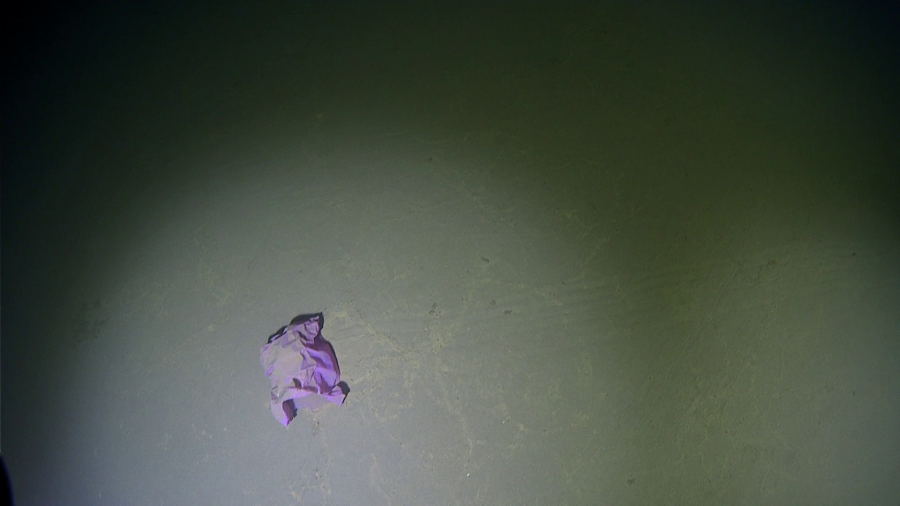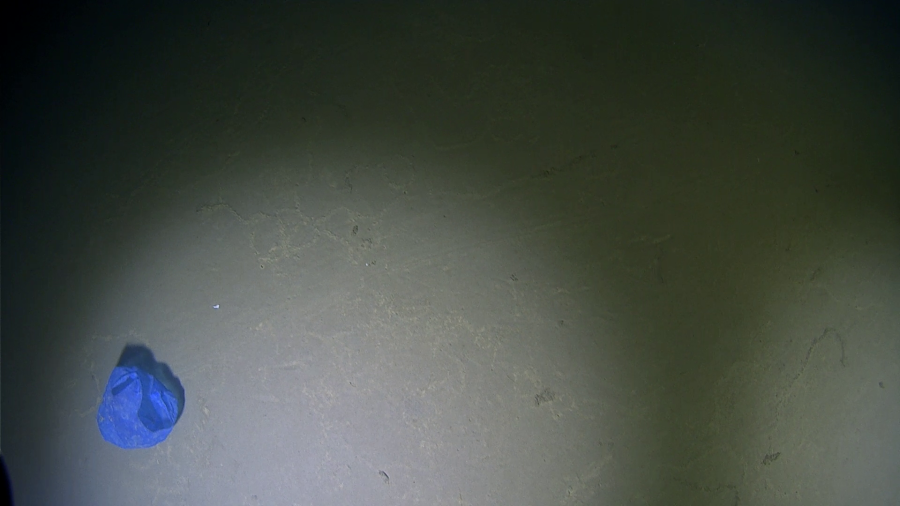Plastic Bags Are Leaving Their Mark on the Deep-Sea Floor
Müllspuren are the latest sign of the plastipocalypse.
Article body copy
Plastic pollution is everywhere, from the tip of Mount Everest to the bottom of the Mariana Trench. Wherever it goes, plastic has unexpected effects: it transports pathogens, strangles wildlife, and, sometimes, becomes habitat. But on the bottom of the Philippine Trench, 10,000 meters deep, plastic is reshaping life on the seafloor.
In 2021, Alan Jamieson, a marine biologist at the University of Western Australia, Deo Florence L. Onda, a microbial oceanographer at the University of the Philippines Marine Science Institute, and their crew descended into the third-deepest trench in the world. The place was swarming with plastic bags.
As the scientists watched, the deep-sea current was dragging plastic bags along the seafloor, scraping it with parallel lines like tire tracks. Jamieson had seen these tracks before when he joined the Five Deeps Expedition, which journeyed to the Puerto Rico Trench in the Atlantic, the South Sandwich Trench in the Southern Ocean, the Java Trench in the Indian Ocean, the Challenger Deep in the Pacific, and the Molloy Deep in the Arctic Ocean. But he’d never understood where they came from. “There’s nothing in the deep sea that travels in straight lines,” Jamieson says.
Jamieson and Onda named these tracks müllspuren. It’s a nod to a German word, lebensspuren, which refers to the trails left by seafloor life. To the scientists’ dismay, the müllspuren were wiping out the lebensspuren.
On the bottom of the Philippine Trench, 10,000 meters deep, researchers saw plastic bags marking up the seafloor like teeny tiny little trawlers. Photos by Alan Jamieson for Caladan Oceanic LLC
The plastic bags’ impact on the seafloor could have repercussions for deep-sea life, Onda says. The main source of food for many deep-sea creatures is the organic matter that falls from the surface. Kazumasa Oguri, a biologist at the University of Southern Denmark who was not involved in the research, says plastic bags barreling across and gouging into the sediment could bury this scarce food.
Jamieson compares it to bulldozing a forest.
“All the material might still be there—all the volume of the tree and all the leaves might still be there—but someone comes along and pushes it over and flattens it,” he says. “You’ve altered the environment to the point that it doesn’t represent to the animals what it should.”
The tracks could also disrupt how carbon is stored in deep-sea sediments. It will take more research to properly understand the implications of müllspuren on the marine carbon cycle and other deep-sea ecological processes. But the study shows that plastic is changing the landscape of the seafloor—even 10,000 meters below the waves.
“These studies, although very basic, help us understand nature better and help us understand our connection with nature,” says Onda. “When I talk about this study to other people, they get shocked. That shock factor is important because it allows them to reflect, realize, and, hopefully, do something.”



